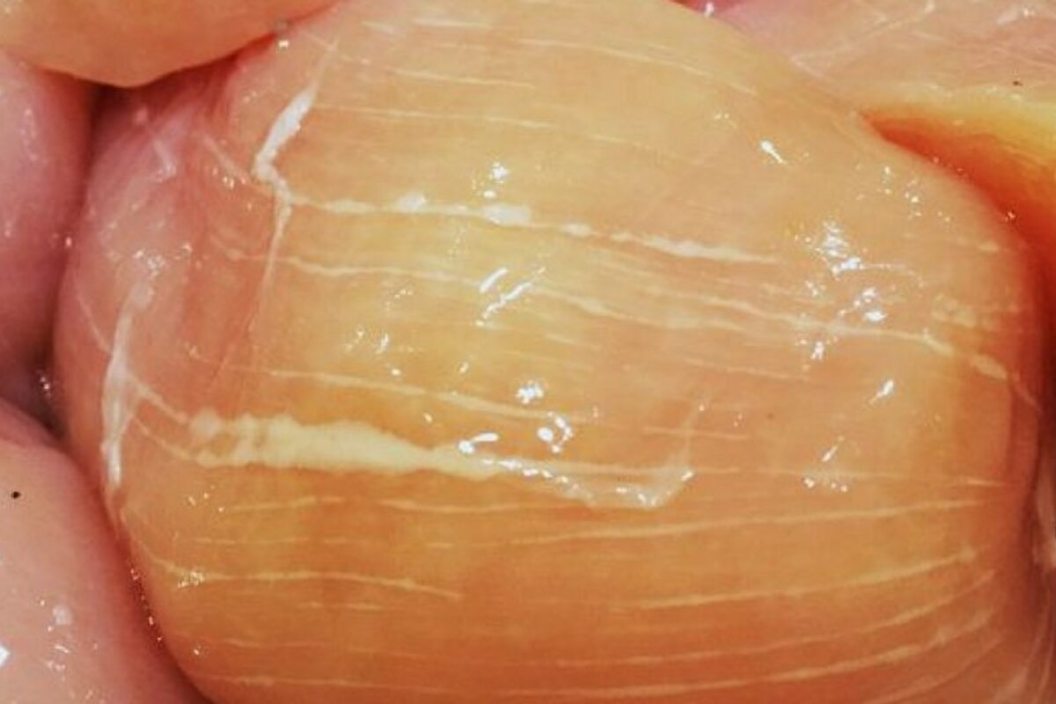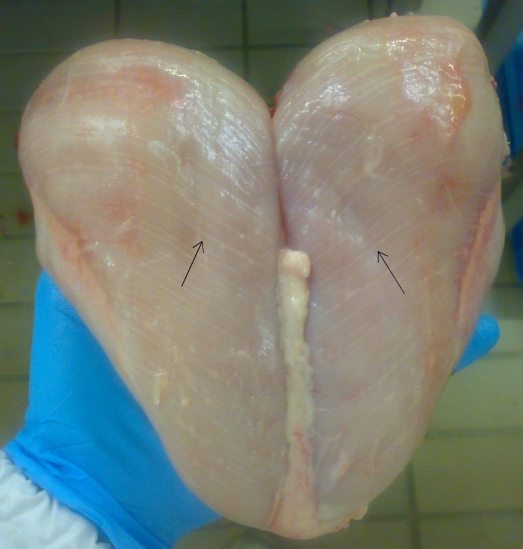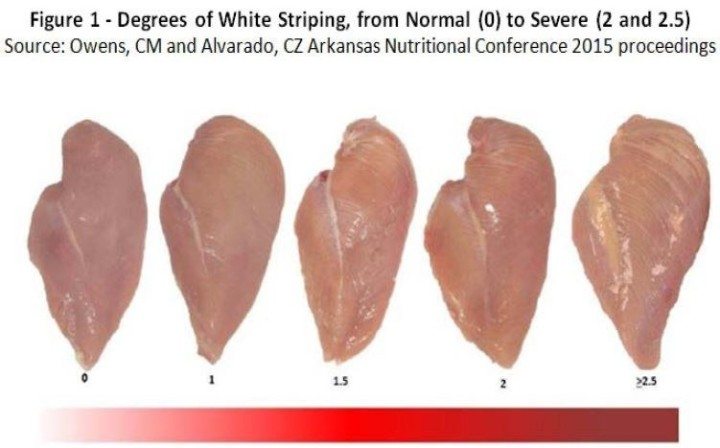The other day at the grocery store I picked up a package of chicken breasts. Before dropping the package into my shopping cart, my eye noticed something a bit off about the coloring. Normally a flesh uniform pink, this package contained chicken with white stripes.
Videos by Wide Open Country
I looked through the other packages and a few other pieces contained the stripes. Carefully looking through the packages of raw chicken breast meat, I found the package without striping and went along with my shopping.
According to a study published in the Italian Journal of Animal Science back in 2013, white stripes in chicken is categorized as a muscle disorder mostly found in modern hybrid birds.
Unlike the past, where chicken would grow to be about three or four pounds, today's industry standards have halved the time it takes to grow a chicken to six pounds. While scientists still do not have a conclusive answer to why the chickens are suffering from this muscle disorder, it's clear that is has something to do with the new farm techniques we didn't use over fifty years ago.
Americans are eating chicken like nobody's business. On average Americans consume over 91 pounds of the bird per year (that's 9 billion birds a year, according to the group Compassion in World Farming), thus making it essential that farmers and companies produce bigger chickens faster then ever. That drive to increase the amount of chicken going to market has resulted in factory farms, and the change in farms is changing the birds themselves.
The condition, which ups fat content in chickens to 224 percent, changes the nutritional value of the chicken in one way. It means that the extra fat in your chicken is more than usual, making the chicken breast average out more fat and calories than its non-striped counterparts.
And while the white lines aren't bad for you and don't pose any food safety concerns, the meat quality itself isn't as tasty as their non-striped counterparts. The additional fat means that the chicken is less tender. Plus, the fatty white stripes affect how much marinade the meat will absorb. So while it's safe to eat, it's not the best chicken there is.
Not only does the white striping affect how the chicken meat reacts to marinades, but the appearance of the white stripes is also turning customers off. In a study conducted by the University of Arkansas and Texas A&M, 50 percent of consumers stated that they wouldn't buy chicken with noticeable white striping. And I'm totally with them.
The National Chicken Council says there is nothing to worry about regarding the taste of your chicken with white stripes, however, if you are looking for high-quality chicken without the woody breast and extra fat, we highly suggest looking through the packages before purchasing. Or you could cut out factory farming and buy your chicken from local sources which grow chickens to normal weight.

And if you're looking for some great chicken recipes, we've got you covered. Take advantage of this lean protein by making a batch of our slow cooker chicken and dumplings for a delicious, comforting meal.
This article was originally published on April 19, 2019.






